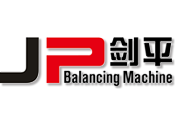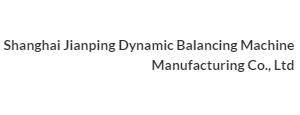-
Common problems when using automatic balancing machine
The basic function of the dynamic balancing machine is to measure the rotor unbalance, and the automatic balancing machine, as the name implies, is a balancing machine that can automatically complete the unbalance measurement and unbalance correction for a specific rotor.
The basic function of the dynamic balancing machine is to measure the rotor unbalance, and the automatic balancing machine, as the name implies, is a balancing machine that can automatically complete the unbalance measurement and unbalance correction for a specific rotor.
In the daily operation and use of the automatic balancing machine, some small problems occur occasionally. Some problems are caused by the workpiece itself, and some problems are caused by the balancing machine itself. These problems might affect the balancing accuracy, or even cause the balancing machine to not be able to complete the work normally. So what will affect the work of the automatic balancing machine? How can we solve these problems?
Factors that cause the balancing machine not to work properly
1. The influence of workpiece itself
△ When the balancing accuracy cannot meet the workpiece balance requirements
△ When the roundness of the support of the workpiece itself is not good
△In the case of poor rigidity of the workpiece itself
△ When the actual working state of the workpiece is inconsistent with the unbalance correction state.
2. The influence of balancing machine itself
△The foundation on which the balancing machine is installed does not meet the requirements, and it is easy to cause resonance
△The left and right supports are not on the same horizontal line, which is easy to cause the rotor to move left and right
△The sensor output signal is abnormal
△The photoelectric head of the balancing machine is not aligned with the reflective paper, which may cause the angle to shift.
There are many other situations in which the balancing machine cannot work normally due to the problems of workpiece itself and balancing machine itself. Therefore, when purchasing a fully automatic balancing machine, the details of the workpiece should be clearly described, and the fully automatic machine needs to be fully debugged before it is put into use.
Common faults of balancing machine and simple solutions
Fault 1: The displayed value has a large error. The displayed value error includes angle error and amount error.
Solution:
①Check whether the rotor being balanced is qualified;
②Whether the balancing speed is stable;
③Check the output of the sensor;
④Re-calibration.
Fault 2: There is no speed or the displayed speed changes too much.
Solution: Adjust the distance between the photoelectric head and the reflective paper appropriately, and the distance between the irradiation and the light receiving of different photoelectric heads is different.
Fault 3: When the measurement data is displayed to be very small or even 0, no matter how much weight you add, it will not change significantly.
Solution:
①Adjust the resistance value of the sensor or adjust and replace the sensor;
②Check whether the connection between the output end of the sensor and the electronic measuring unit is connected;
③Check the self-checking function of the electronic measuring unit.
The above faults are just a few of the common problems in our daily use. Of course, the construction and structure of the balancing machine are more complicated, and other problems will definitely occur. If you have other questions related to the automatic balancing machine, you can consult the dynamic balancing machine manufacturer - Shanghai Jianping. In any case, I hope everyone can pay attention to the precautions when using the automatic balancing machine to prevent unnecessary damage.
-
Shanghai Jianping Dynamic Balancing Machine Manufacturing Co., Ltd. briefly introduces the following causes for the rotor unbalance. I hope that the readers will have a beginning understanding of the rotor unbalance through this article.
Shanghai Jianping Dynamic Balancing Machine Manufacturing Co., Ltd. briefly introduces the following causes for the rotor unbalance. I hope that the readers will have a beginning understanding of the rotor unbalance through this article.
l The installation is wrong, and the mass centerline of a part does not coincide with the rotation centerline during installation.
l Casting blowhole
l Assembly error
l Half key question
l The rotor is deformed due to residual stress, uneven heating, etc.
l There is sediment on the rotor
l The design is not symmetrical, such as the winding of the motor rotor is asymmetrical on one side and the other side.
-
JP teaches you how to choose a balancing machine
Shanghai Jianping Dynamic Balancing Machine Manufacturing Co., Ltd. briefly introduces the following causes for the rotor unbalance. I hope that the readers will have a beginning understanding of the rotor unbalance through this article.
When we buy a balancer, we might think about a lot of questions? For example: Once we want to buy a balancing machine, we will think about which balancing machine supplier is better? Where to find the right balancer at the right price? Which balance machine is more suitable for us! Below we Shanghai Jianping Dynamic Balancing Machine Manufacturing Co., Ltd., referred to as "JP", will teach you how to choose a balancing machine.
A balancing machine is a machine that measures the unbalance amount and position of a rotating object (rotor).
JP Tips for choosing a good balancing machine: We also need to understand the classification of balancing machines, and we must first determine the balancing accuracy grade required by the workpiece, and pay attention to the following points:
When choosing a balancing machine: your company needs to check the dimensions and weight of large and small workpieces that require dynamic balancing and the dimensions of commonly used workpieces.
Weight of the workpiece to be balanced:
When choosing a balancing machine, the weight of the workpiece should be 1/2 to 1/3 of the equipment weight range, which can achieve a better balancing effect. Large or small values can be used for dynamic balancing, but they may not meet the balancing accuracy requirements of the workpiece.
Dimension of the workpiece to be balanced:
1.It is necessary to meet the technical parameters such as the supporting distance between the brackets of the balancer and the center height .
2.If the workpiece is rotating with a large torque(such as a fan), a universal coupling drive balancing machine can be used.
3.The belt drive balancing machine is generally selected for the motor industry. The belt type generally has higher precision and is more convenient to operate.
4.The single-plane vertical balancing machine is suitable for correcting various disc-shaped workpieces with a much larger diameter than thickness, such as: flywheels, pulleys, diamond grinding wheels, automobile clutches and assemblies, wheel hubs, brake discs, disc cutters, pressure plates , dials, impellers of centrifuges, fans and pumps, etc.
5.Self-driven balancing machine is suitable for small fan blades, such as air-conditioning blowers, evaporative fans and so on.
-
Troubleshooting method of balancing machine
The balancing requirement for balancing machine to correct the workpiece exceeds the min. achievable residual unbalance of the balancing machine itself, that is, the balancing accuracy of the balancing machine cannot meet the balancing requirement of the workpiece.
The balancing requirement for balancing machine to correct the workpiece exceeds the min. achievable residual unbalance of the balancing machine itself, that is, the balancing accuracy of the balancing machine cannot meet the balancing requirement of the workpiece.
The balanced rotor will show significant vibration in practical application, which is not caused by the unbalance of the rotor itself, but the high-order harmonic waves caused by the ellipse of the rotor bearing journal or the difference in the stiffness of the rotor layout. vibrations caused by electromagnetic encouragement, the influence of gas eddy currents in the rotating process of the bladed rotor, and the resonance of the system. Because other equipment connected to the power grid is frequently started, the influence of power supply fluctuation and noise or the disturbance occurs due to the vicinity of the diameter of the roller of the support frame and the journal of the rotor. The difference between the diameter of the roller and the dimension of the workpiece journal should be greater than 20%.
Because of the technology used by the balancing machine to check the rotor without journals, the unbalance of the mandrel itself or the coaxiality error of the mandrel device and the support, and the gap error of the cooperation between the mandrel and the rotor, which causes a large unbalance of the balanced rotor during repeated installation or use.
-
Typical structure of general horizontal dynamic balancing machine
I guess all of your might quite familiar with the horizontal dynamic balancing machine, consider we have already talked a lot about the knowledge of the horizontal dynamic balancing machine before, here we will introduce the typical layout of general horizontal dynamic balancing machine as follows:
I guess all of your might quite familiar with the horizontal dynamic balancing machine, consider we have already talked a lot about the knowledge of the horizontal dynamic balancing machine before, here we will introduce the typical layout of general horizontal dynamic balancing machine as follows:
Typical layout of a general purpose horizontal balancing machine
The balanced rotors are placed on the left and right support bearing pedestals. The motor drives the rotor to rotate through the speed change unit and the coupling. The support vibration or vibration force generated by the rotor unbalance is converted into corresponding electrical signals by the left and right sensors. After being processed by the plane separation circuit, the output signals are related to the unbalance on the left and right correction planes respectively.



- PRODUCTS Universal Balancers Automatic Balancers Auto Parts Industry Fan & Air Conditioning Industry Motor Industry Pump Industry Home Appliance Industry Machine Tool Industry Railway Industry Marine Industry Textile Industry 3C Electronics Industry Aviation & Aerospace Industry Grinding Tool & Abrasive Industry Fitness Equipment Industry Papermaking Industry Roller Industry Assembly Line Detection & Assembly Equipment
- COMPANY
- SERVICE
- COOPERATION
- CONTACT






